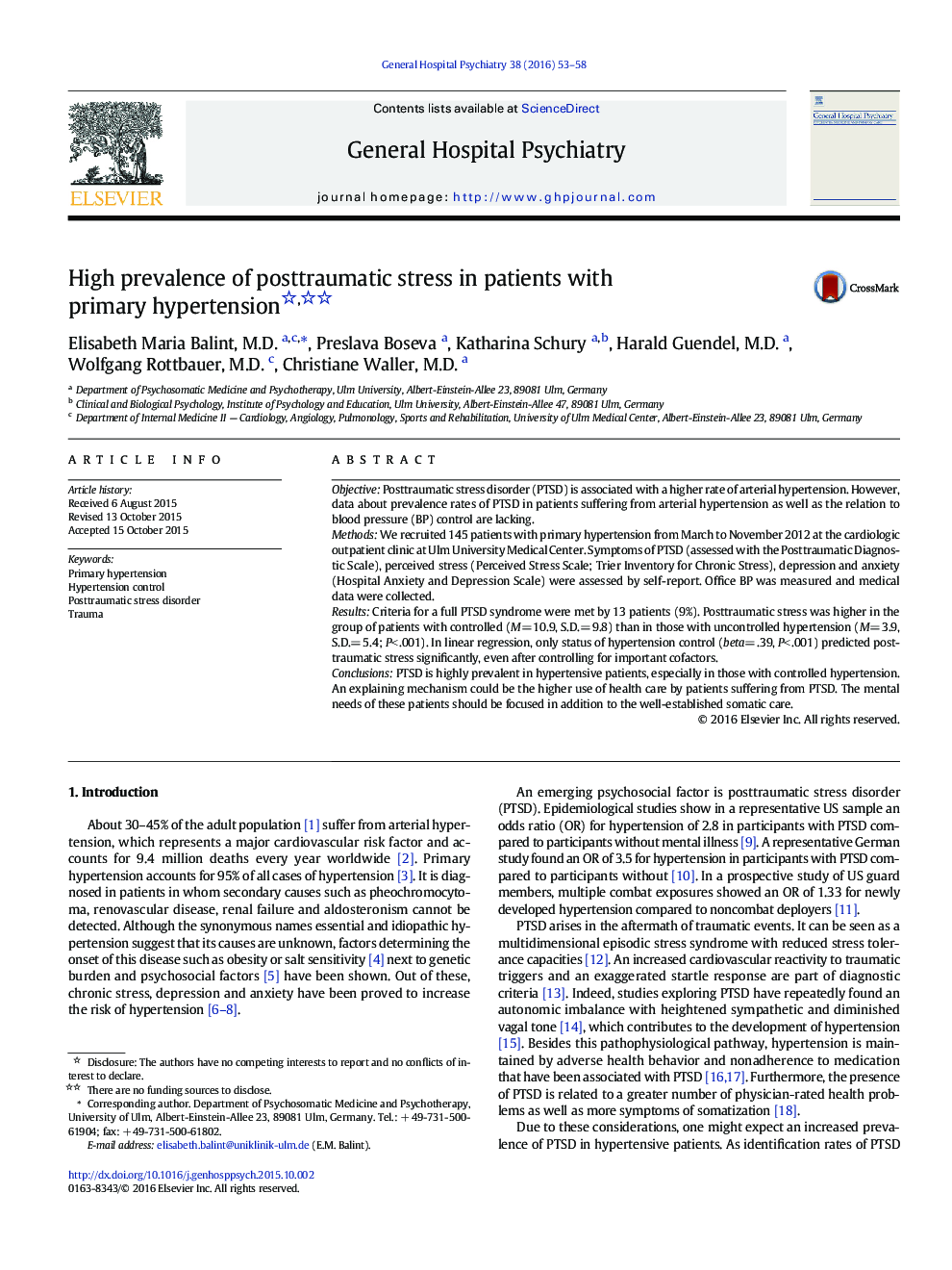| Article ID | Journal | Published Year | Pages | File Type |
|---|---|---|---|---|
| 3237606 | General Hospital Psychiatry | 2016 | 6 Pages |
ObjectivePosttraumatic stress disorder (PTSD) is associated with a higher rate of arterial hypertension. However, data about prevalence rates of PTSD in patients suffering from arterial hypertension as well as the relation to blood pressure (BP) control are lacking.MethodsWe recruited 145 patients with primary hypertension from March to November 2012 at the cardiologic outpatient clinic at Ulm University Medical Center. Symptoms of PTSD (assessed with the Posttraumatic Diagnostic Scale), perceived stress (Perceived Stress Scale; Trier Inventory for Chronic Stress), depression and anxiety (Hospital Anxiety and Depression Scale) were assessed by self-report. Office BP was measured and medical data were collected.ResultsCriteria for a full PTSD syndrome were met by 13 patients (9%). Posttraumatic stress was higher in the group of patients with controlled (M= 10.9, S.D.= 9.8) than in those with uncontrolled hypertension (M= 3.9, S.D.= 5.4; P< .001). In linear regression, only status of hypertension control (beta= .39, P< .001) predicted posttraumatic stress significantly, even after controlling for important cofactors.ConclusionsPTSD is highly prevalent in hypertensive patients, especially in those with controlled hypertension. An explaining mechanism could be the higher use of health care by patients suffering from PTSD. The mental needs of these patients should be focused in addition to the well-established somatic care.
